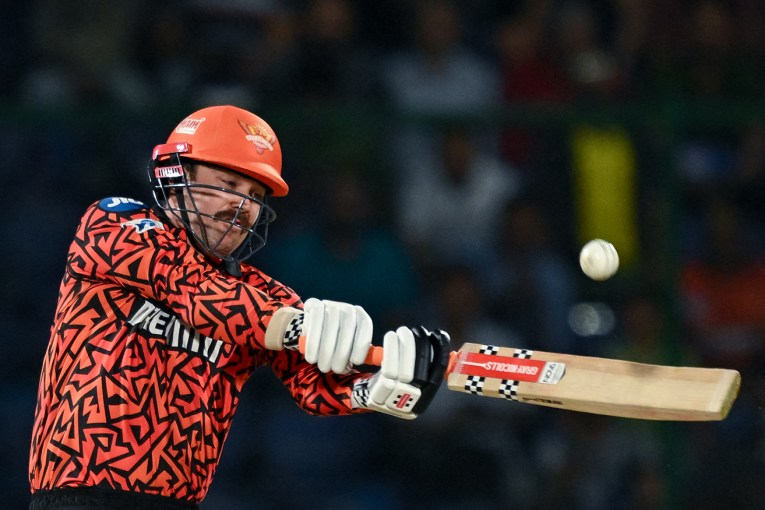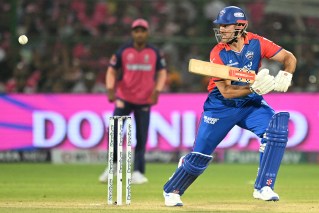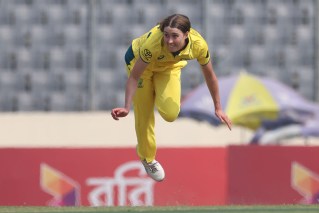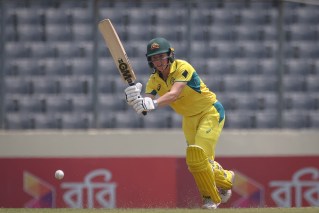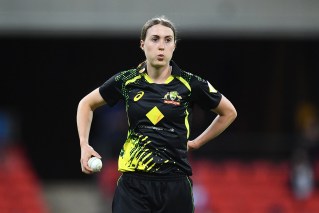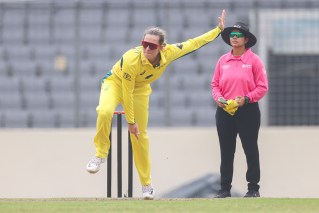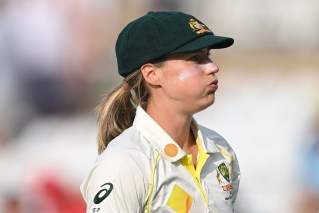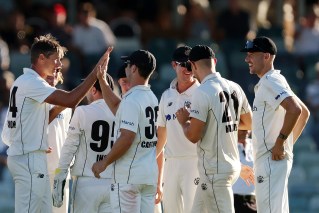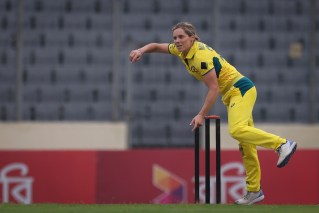Phil Hughes inquest: Bollinger denies ‘kill you’ comment

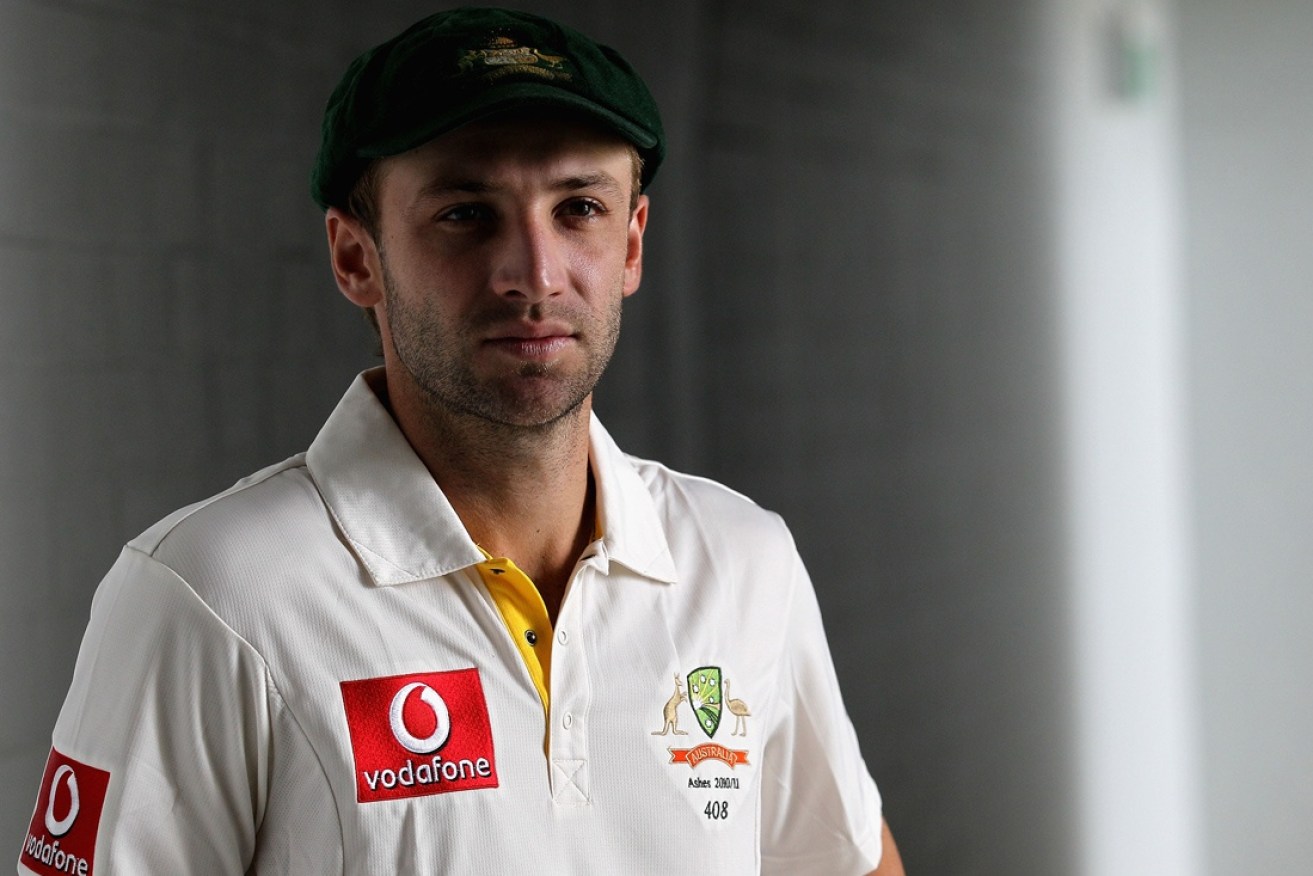
Hughes played 26 Test matches for Australia. Photo: Getty
Former Australia and New South Wales bowler Doug Bollinger has rejected the suggestion he told South Australian batsmen “I’m going to kill you” during the Sheffield Shield match in which Phillip Hughes died.
Hughes, playing for South Australia, was struck on the neck by a cricket ball in November 2014.
He collapsed instantly and died two days later after the injury to his neck caused a haemorrhage in his brain.
Bollinger was not bowling at the time.
New South Wales coroner Michael Barnes began an inquest into the cause of Hughes’ death on Monday and may make recommendations regarding public health and safety.
A barrister for the Hughes family, Greg Melick SC, told the inquest Bollinger had made unsavoury comments during the match.
Giving evidence on Monday, Bollinger, a former Test and NSW teammate of Hughes, at first completely denied saying the words but later said he didn’t think he had.
In a written statement, he said he couldn’t remember sledging Hughes on the day at all.
“It was nearly two years ago,” Bollinger wrote in the statement, which was partly read to the inquest at the Downing Centre.
“I can’t remember saying anything to Tom Cooper but it’s possible I did.”
It’s not suggested Bollinger meant what he allegedly said, Mr Melick told the court.
Counsel assisting Mr Barnes, Katrina Stern SC, remarked that 20 bouncers were bowled to Hughes but cricket journalist Peter Lalor tweeted that Bollinger said bouncers were part of his normal game.
"You can bowl two bouncers an over and that's how I bowl" Bollinger.
— Peter Lalor (@plalor) October 10, 2016
No short-ball plan
Brad Haddin, who was captaining New South Wales on the day, said he didn’t think concerns from Hughes’ family the batsman had been unfairly targeted by short balls from the NSW bowlers were warranted.

Haddin said his side did not deliberately bowl short to Hughes. Photo: Getty
The 25-year-old was hit by a short ball from pace bowler Sean Abbott while at the crease for SA in a Sheffield Shield match at the Sydney Cricket Ground.
“There was no discussion with anyone in New South Wales about bowling a higher number of short balls,” he said.
“There was no discussion with the bowlers about how they needed to bowl.
“From a captain’s point of view, I was just trying to cut the boundaries off.”
Haddin added: “The game was played in a good spirit. It was just a normal game of cricket.”
He also said he had no knowledge of Bollinger’s alleged comment.
In the opening address delivered by Ms Stern, the inquest heard that team doctor John Orchard was performing mouth-to-mouth on Hughes within five minutes of the accident.
It also heard it took more than 30 minutes for an ambulance to reach the batsman, while it was more than an hour before he arrived at hospital.
Ms Stern said the ambulance dispatcher assigned a priority level of 1-C to the incident, which is the third highest.

Cricket Australia boss James Sutherland asked for the privacy of Hughes’ family to be respected. Photo: Getty
“I anticipate that at the end of the evidence taken in this inquest there may well be no question that none of the chronology set out above had any impact upon the death of Phillip Hughes which appears to have been inevitable from the point of impact,” she said.
Helmet did not comply with British standards
Hughes’ sister and father left the courtroom before footage was played of the moment he was struck by the ball.
Ms Stern said there was no suggestion his helmet malfunctioned, and the area of his neck which was struck by the ball was not protected by the helmet.
“Since this incident, Missouri, the helmet manufacturer, has produced a product called a ‘stem guard’ which clips onto a cricket helmet and provides additional protection in a flexible form in the neck area,” she said.

The cricketer’s former manager, James Henderson, asked for privacy on behalf of the Hughes family. Photo: ABC
“This was developed in direct response to the incident involving Phillip Hughes to provide additional protection in the neck region.
“A number of cricketers who provided statements have indicated that they sometimes or always wear the stem guard.”
Ms Stern added that Hughes’ helmet complied with Australian standards but not with the 2013 British standard – but it did not appear it would have prevented his death if it did comply with British standards.
Before the inquest began, Hughes’ former manager James Henderson spoke on behalf of the cricketer’s family and asked the media to respect their privacy during the week-long hearing.
Cricket Australia boss James Sutherland echoed his sentiments.
Cricket Australia released the findings and recommendations of an independent review into Hughes’ death in May.
They found that wearing a more modern helmet and a neck guard would have been unlikely to prevent the cricketer’s death.
– with AAP/ABC
